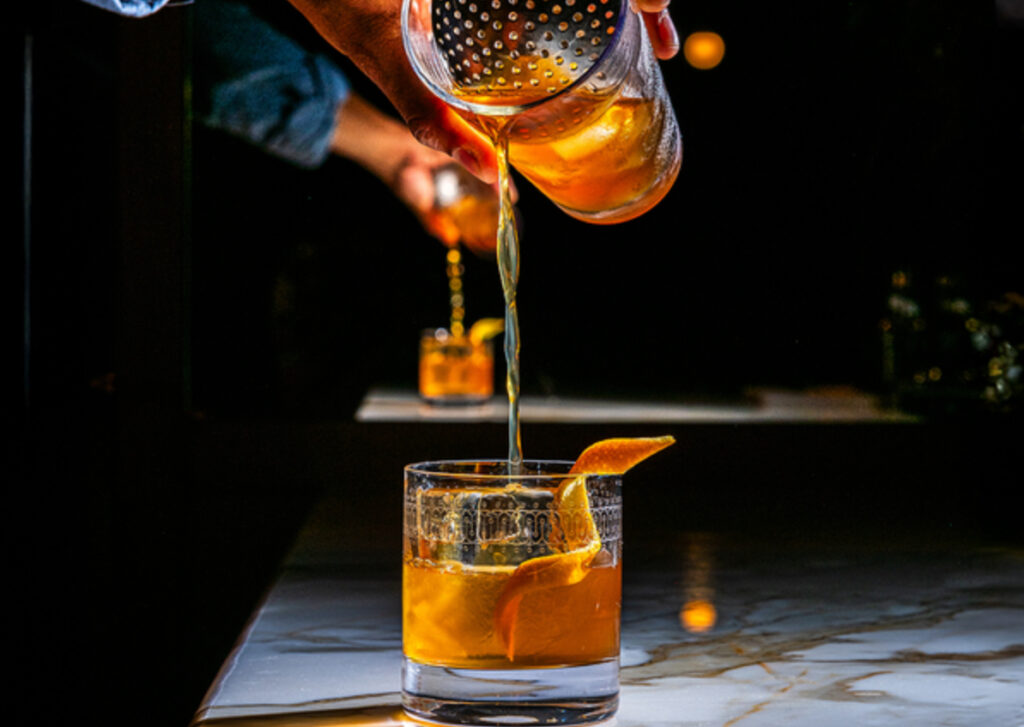In a world where most cocktail bars flicker like matches—bright, brief, and too often forgettable—Death & Co has become a slow-burning legend. First opened on New Year’s Eve in 2006 in Manhattan’s East Village, it was never meant to be just another entry in the city’s already saturated nightlife scene. It was, instead, a statement: a reverent homage to the golden age of cocktails, a serious bar for serious drinkers. Dimly lit, sharply tailored, and obsessively meticulous, Death & Co brought gravitas back to the glass.
But what happens after you’re named one of the “World’s Best Bars”? After your bar team becomes the hospitality world’s equivalent of a Michelin brigade? You do something that many great venues fail to even imagine—you grow. And not by diluting the experience or chasing franchises. Death & Co is scaling with elegance, design, and a business model that stretches far beyond barstools. With new locations in Nashville, Atlanta, and Australia on the horizon, plus thriving expansions into hospitality, e-commerce, and publishing, Death & Co is no longer just a cocktail bar. It’s a cultural brand. An ecosystem. A modern hospitality empire built on bitters, balance, and unapologetically elevated standards.
Now, they’re inviting the public to participate—not just as guests, but as owners.
FROM STIRRED TO SCALE: A NEW MODEL FOR HOSPITALITY
Scaling a cocktail bar is notoriously difficult. Excellence in mixology doesn’t come from automation or mass production. It comes from intuition, craftsmanship, the kind of muscle memory that only develops in tightly knit crews. Most attempts at replication result in watered-down experiences—safe, generic facsimiles that lose the spark of the original.
Death & Co knew this. Which is why they didn’t just expand locations—they expanded vertically. Their parent company, Gin & Luck, developed a hybrid model that pairs their bars with boutique hotels, thoughtful design firms, publishing arms, and digital commerce. Each extension supports the next. The Nashville and Denver bars exist inside carefully curated hotel spaces. Their award-winning cocktail books—Death & Co: Modern Classic Cocktails, Cocktail Codex—serve as both brand extensions and educational resources. The merchandise (glassware, tools, barware) available via e-commerce reinforces their aesthetic and ideology.
This is how they scale: not by diluting, but by integrating. Every touchpoint—book, bed, bottle—feels part of the same high-concept world.
AESTHETIC CONTROL AND CULTURAL CONSISTENCY
Much of Death & Co’s success can be attributed to its radical commitment to aesthetic and tonal consistency. Each location, either it’s the original East Village speakeasy or the soaring, art-deco-informed outpost in Los Angeles, adheres to a mood: moody lighting, intimate spatial planning, tactile finishes, and a commitment to rituals. Even when adapting to different architectural environments, the brand ethos persists—refined darkness, reverent detail, and an unmistakable aromatherapy of ambition.
Staff uniforms are deliberate. Menus are designed with typographic rigor. Music is curated. There is no accidental noise. This is the kind of obsessive curation once reserved for high-end hotels and luxury boutiques, now applied to the neighborhood cocktail bar.
In Nashville, they opened within The Bond Collective—a hospitality concept where design and experience merge. In Atlanta and Australia, they are reportedly deploying variations of this same model: immersive spaces where the cocktail bar anchors a larger narrative. Each new Death & Co isn’t merely a venue. It’s a portal. A fully sensory brand embassy.
EQUITY AS INVITATION: THE DEMOCRATIZATION OF OWNERSHIP
What makes this next chapter so compelling is not just geographical. It’s philosophical. Death & Co is opening a new round of equity fundraising—not through traditional institutional backers, but through community participation. For a minimum investment, anyone can become a stakeholder in one of the most respected hospitality brands in the world.
This isn’t a gimmick. It’s a new template for how hospitality brands grow while retaining authenticity. By allowing loyal patrons, industry insiders, and cocktail enthusiasts to become part-owners, Death & Co transforms guests into advocates. Investors don’t just get equity—they receive access: priority bookings, exclusive investor happy hours, brand discounts, and experiential benefits.
In a post-pandemic landscape where many bars were forced to close and others clung to survival, this model feels revolutionary. It turns survival into synergy. It builds community into capital.
And perhaps most importantly—it keeps the business independent.
BEYOND THE GLASS: STORYTELLING AS BUSINESS STRATEGY
Death & Co has always excelled at more than drinks. It tells stories. The act of ordering a cocktail here is narrative—an engagement with a lineage, a philosophy, a house aesthetic. The bartenders are not just mixologists; they are hosts, dramaturges, archivists. The books are not manuals, but bibles. They tell the history of spirits, the science of bitters, the theory of ice. They teach people not only how to drink, but how to think about drinking.
This literary and intellectual underpinning elevates the brand. It transforms ephemeral experiences into lasting impressions. Customers don’t just remember what they drank—they remember how it felt to be there. And that memory becomes the brand’s most valuable asset.
The publishing arm reinforces this memory with clarity. The books are not just beautiful objects; they are strategic brand extensions, designed to communicate Death & Co’s world view while expanding its influence beyond the bar.
TRAINING AND TALENT RETENTION: AN UNSPOKEN ADVANTAGE
Hospitality is notorious for burnout, turnover, and precarious labor. Death & Co has taken steps to challenge that narrative. Through their hospitality group, they have created upward mobility pathways—barbacks become bartenders, bartenders become educators, educators become directors. The brand invests in its people the way it invests in its design.
By creating a scalable ecosystem, they also allow for geographic mobility. A bartender trained in Denver can transfer to LA. A beverage director in Nashville can lead seminars in NYC. This fluidity not only retains talent—it builds institutional knowledge.
In this sense, Death & Co doesn’t just make great cocktails. It builds great careers.
HOSPITALITY AS IMMERSIVE ECOSYSTEM
As they grow into Atlanta and stretch across oceans to Australia, the question becomes: how do you keep intimacy alive in scale? Can a brand rooted in detail maintain that granular care when it becomes global?
Death & Co seems determined to prove the answer is yes. The team’s approach to scaling is slow, deliberate, and strategic. Rather than racing to populate cities with carbon-copy venues, they’re investing in contextual design—adapting to each city’s unique spirit without losing their DNA.
More than just bars, each location becomes a cultural node. Partnerships with local artists, regional sourcing for ingredients, bespoke design tweaks—all add nuance. The future for Death & Co isn’t a uniform chain, but a network of living, breathing extensions.
The model is already inspiring a new generation of hospitality entrepreneurs. If the last wave was defined by the “Instagrammable bar,” the next will be defined by the immersive bar. Less about viral moments, more about lasting ethos.
The Hustle
Death & Co didn’t set out to be a brand. It set out to be the best bar in New York. But by focusing not on domination, but on dedication—by expanding not with velocity, but with values—they’ve managed to do something rare. They’ve built a brand that is both aspirational and accessible. They’ve created spaces that feel elite, yet intimate. And now, with community-backed equity and visionary expansion plans, they are writing the next chapter in what hospitality can become.
For those lucky enough to have ordered an Oaxaca Old Fashioned in that East Village jewel box, the experience is unforgettable. But for the next wave of guests, bartenders, and investors, Death & Co is more than a drink. It’s a movement.
No comments yet.







